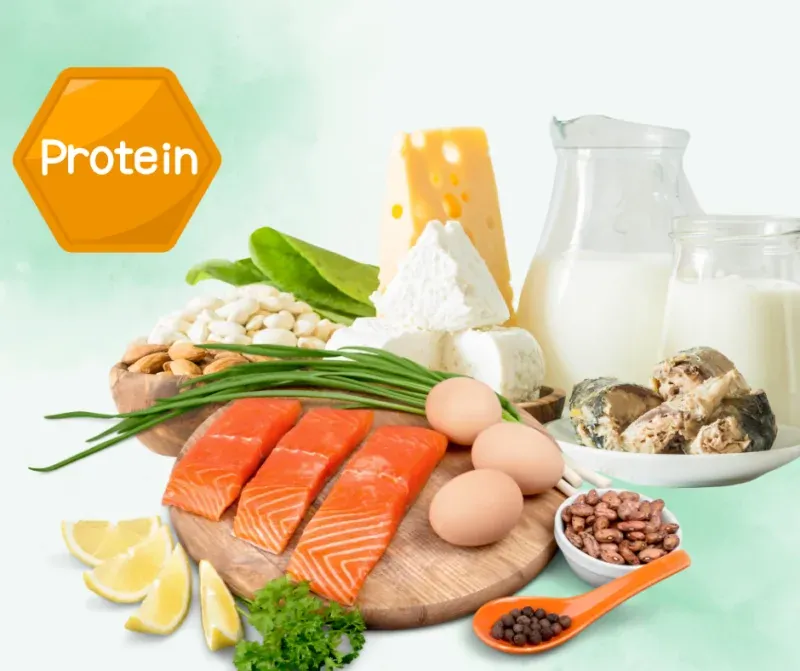Balancing Protein Intake: How Much Is Too Much or Too Little?

Balancing Protein Intake: How Much Is Too Much or Too Little?
Protein is a cornerstone of human health, playing a vital role in everything from muscle growth to hormone production. However, striking the right balance in protein consumption is critical, as both excess and insufficient intake can lead to adverse health effects. Dr. Twincy Ann Sunil, a clinical nutritionist at Apollo Spectra Hospital, Bangalore, emphasizes the importance of understanding individual protein needs to optimize health outcomes. As of September 2, 2025, with the growing popularity of protein-enriched products, from shakes to snacks, many are reevaluating their dietary habits to ensure they meet their nutritional requirements without overdoing it. This article explores the science behind protein, how to calculate your needs, and the risks of consuming too much or too little, offering practical guidance for a balanced diet.
The Role of Protein in the Body
Protein, a complex molecule composed of amino acids, is essential for numerous bodily functions. Beyond its well-known role in building and repairing muscles, protein supports the breakdown of nutrients, the production of enzymes, and the creation of vital components like hair, blood, hormones, and antibodies. According to Dr. Sunil, protein’s significance extends to immune function, as it helps produce antibodies that combat infections, and to cellular repair, ensuring tissues remain healthy. Historically, protein sources were limited to whole foods like meats, seafood, eggs, tofu, and pumpkin seeds. However, the modern food industry has expanded access through fortified products like protein bars, powders, and even cereals, making it easier for individuals to meet their daily requirements.
The increased availability of protein-rich products reflects growing awareness of its importance, driven by fitness trends and dietary shifts toward plant-based and high-protein diets. For instance, a 2025 report from the Indian Council of Medical Research (ICMR) notes that protein consumption in urban India has risen by 12% over the past decade, fueled by fitness culture and health consciousness. However, this surge has also led to misconceptions about how much protein is necessary, prompting experts to advocate for personalized nutrition plans to avoid potential health risks.

Calculating Your Protein Needs
Determining the right amount of protein for your body depends on several factors, including weight, sex, age, activity level, and health status. Dr. Sunil recommends a baseline of 0.8 grams of protein per kilogram of body weight for sedentary adults, aligning with guidelines from the World Health Organization (WHO). For example, a 70-kilogram individual would need approximately 56 grams of protein daily. However, active individuals, such as athletes or those engaging in regular strength training, may require 1.2 to 2.0 grams per kilogram, while pregnant women, older adults, or those recovering from illness may need slightly higher amounts to support tissue repair and growth.
To put this into perspective, a single egg provides about 6 grams of protein, a 100-gram serving of chicken breast offers 31 grams, and a cup of cooked lentils delivers 18 grams. Plant-based sources like tofu (10 grams per 100 grams) and pumpkin seeds (30 grams per 100 grams) are also excellent options, especially for vegetarians. Tools like online protein calculators or consultations with dietitians can help individuals tailor their intake, ensuring they meet their needs without overloading their system.
Risks of Excessive Protein Intake
While protein is essential, consuming too much can strain the body. Excess protein is either excreted through the kidneys, which can lead to dehydration, or converted into fat, potentially causing weight gain. Dr. Sunil highlights that high-protein diets, often popularized by fitness influencers, may overburden the kidneys, particularly in individuals with pre-existing renal conditions. A 2024 study in the Journal of Nutrition found that prolonged excessive protein intake (above 2.5 grams per kilogram of body weight) increased the risk of kidney strain by 20% in healthy adults. Additionally, over-reliance on protein supplements can lead to nutrient imbalances, as these products often lack the vitamins, minerals, and fiber found in whole foods.
Excessive protein consumption can also disrupt metabolic balance. For instance, diets high in animal proteins may increase saturated fat intake, raising the risk of heart disease if not balanced with healthy fats and carbohydrates. Furthermore, overconsumption can lead to digestive issues like constipation or bloating, particularly when fiber intake is low. Dr. Sunil advises moderating protein intake and diversifying sources to include plant-based options, which are often lower in calories and rich in complementary nutrients.
Dangers of Protein Deficiency
On the other end of the spectrum, inadequate protein intake can lead to serious health issues. Protein deficiency is rare in developed countries but remains a concern in regions with limited access to diverse foods. Symptoms include muscle wasting, fatigue, weakened immunity, and slow wound healing. In children, severe deficiency can cause growth stunting, as seen in conditions like kwashiorkor, prevalent in parts of South Asia and Africa. In India, the ICMR estimates that 10-15% of rural populations consume less than 50% of their recommended protein intake, often due to reliance on carbohydrate-heavy diets.
For adults, insufficient protein can lead to sarcopenia (age-related muscle loss), particularly in those over 60, increasing the risk of falls and fractures. A 2025 study published in The Lancet found that older adults consuming less than 0.6 grams of protein per kilogram of body weight had a 30% higher risk of muscle degradation. Vegetarians and vegans must be particularly vigilant, combining plant-based proteins like lentils, beans, and quinoa to ensure they obtain all essential amino acids, as plant sources often lack one or more.
Protein’s Role in Weight Management
One of protein’s most celebrated benefits is its ability to promote satiety, aiding weight management. Foods high in protein, such as eggs, Greek yogurt, and lean meats, take longer to digest, reducing hunger and curbing snacking. A 2024 meta-analysis in Obesity Reviews found that diets with 25-30% of calories from protein reduced appetite by 15% compared to lower-protein diets, supporting weight loss efforts. However, Dr. Sunil cautions that over-relying on protein at the expense of carbohydrates and fats can lead to nutrient deficiencies, as these macronutrients provide energy and essential micronutrients like omega-3 fatty acids and fiber.
For example, cutting carbohydrates too drastically can impair energy levels and cognitive function, while insufficient fats can affect hormone production and skin health. A balanced plate, as recommended by the ICMR, should include 50-60% carbohydrates, 20-30% fats, and 10-20% protein for most adults. For weight loss, slightly increasing protein to 20-25% of daily calories while maintaining a calorie deficit can be effective, but consultation with a dietitian is advised to avoid imbalances.
Practical Tips for Balancing Protein Intake
To achieve optimal protein intake, Dr. Sunil recommends spreading consumption evenly across meals to maximize absorption and utilization. For instance, a 70-kilogram individual needing 56 grams of protein daily could aim for 15-20 grams per meal, such as a breakfast of two eggs (12 grams), a lunch with 100 grams of chicken (31 grams), and a snack of Greek yogurt (10 grams). Incorporating a variety of sources—animal and plant-based—ensures a complete amino acid profile and reduces the risk of nutrient gaps. For vegetarians, combining grains like rice with legumes like dal creates a complementary protein source.
Portion control is also key. Overloading on protein supplements, which can contain 20-40 grams per serving, may lead to excess intake, so they should be used sparingly and under guidance. Hydration is critical, especially for those on high-protein diets, as the kidneys require adequate water to process protein byproducts. Dr. Sunil also advises regular health checkups to monitor kidney and liver function, particularly for individuals with chronic conditions or those adopting high-protein diets for fitness goals.
Navigating the Protein Trend
The rise of protein-fortified products has made it easier to meet daily needs but has also fueled overconsumption among some groups, particularly fitness enthusiasts. Protein powders, bars, and ready-to-drink shakes are projected to generate $2.5 billion in revenue in India by 2027, according to a 2025 market analysis. While convenient, these products often contain added sugars or artificial additives, which can negate health benefits. Whole foods remain the gold standard, offering a broader nutrient profile and better satiety.
Cultural dietary patterns in India, where vegetarianism is prevalent, also influence protein intake. Traditional dishes like dal, paneer, and yogurt provide ample protein, but portion sizes and meal frequency must be adjusted to meet needs, especially for active individuals. Education campaigns, such as those by the Food Safety and Standards Authority of India (FSSAI), are promoting balanced diets, emphasizing the importance of combining protein with other macronutrients to support overall health.
Comment / Reply From
No comments yet. Be the first to comment!






